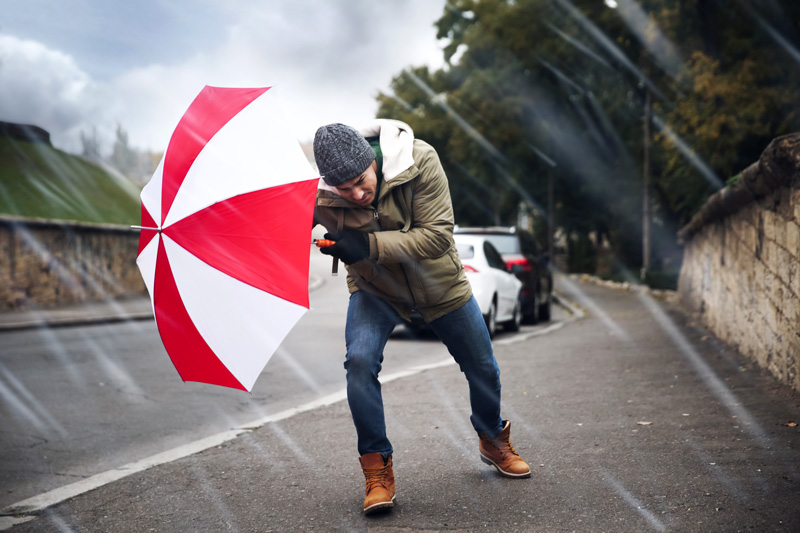Sherman Gillums Jr., the Federal Emergency Management Agency Director of Disability Integration and Coordination, remembers the event that made him realize emergency responses during natural disasters needed to be more autism-inclusive. In the throes of Hurricane Ian — the fifth strongest storm to ever strike the United States — he found a mother living out of her car with her two autistic sons in the backseat. When he asked her why she didn’t go to a shelter, she said she worried they would be treated as troublemakers rather than autistic adults. On top of that, she hoped the quiet, enclosed environment of a car would minimize her sons’ sensory overload.

“I just felt like this was something the Office of Disability Integration and Coordination had to address,” Sherman said. “Autism wasn’t really visible to me until that moment, and I want to help other people have that epiphany like I did.”
In 2020, the Centers for Disease Control and Prevention found 1 in 36 Americans is diagnosed with autism, a disorder characterized by social communication challenges and restricted, repetitive behaviors (Maenner et al., 2023). The United Nations Department of Economic and Social Affairs reported that people with disabilities — including autism — are two to four times more likely to die or be injured during natural disasters (United Nations, 2016). As rising temperatures and sea levels make extreme weather events like Ian increasingly common and intense, Sherman says he has committed to developing autism-specific support systems for natural disaster situations.
“People with autism include our family members, friends, co-workers, neighbors, and community members. It is in our collective best interest to better understand how autism affects all aspects of living, especially during times of crisis,” Sherman said. “Understanding the unique aspects of their lived experiences will help us better ensure their safety and recovery when impacted by any number of major disasters, from extreme heat to hurricanes.”
When Hurricane Sandy hit New York in 2012, Cassie Bradshaw not only had to take care of herself but also the seven autistic adults living in the residential home she manages. Forced to evacuate from their beachfront house in Long Beach, Cassie and what she refers to as “the guys” spent four nights sleeping on cots in the Brookville Center for Child Services gymnasium. As Bradshaw and other staff members stockpiled canned food and necessary medications, “the guys” and their classmates performed shows and played basketball in the auditorium.
“One of the guys would literally point to the door every now and then because he wanted to go home,” Cassie said. “I would show him pictures of little things, like trees down in the road and highways closed, to explain why we couldn’t go home. I didn’t tell him our house probably wasn’t there anymore.”
Hoping to improve the experiences of people like Cassie and “the guys,” Sherman and his Office of Disability Integration and Coordination collaborate with local disaster responders to promote autism acceptance and understanding. One of these responders, Jerry Turning, is a retired New Jersey police officer who began holding autism first responder training sessions after his son was diagnosed in 2007. Jerry’s Blue Bridge Autism Training provides emergency service workers with information about what autism is and how it can impact behaviors amid disastrous circumstances.
“A lot of times, individuals with autism are very concrete and literal thinking,” Jerry said. “They need predictability, so planning out what is going to happen is almost as important to them as air. So, natural disasters throw a major wrinkle into the plan. Loss of control and predictability can, for these individuals, bring them to a place where they’re inconsolable.”
Using the example of a family with a 12-year-old autistic child, Jerry listed many tools that could support the child, their parents, and present responders: access to digital technology like tablets or iPads, fidget toys, designated quiet spaces, weighted blankets, or noise-canceling headphones.
Autistic self-advocate Alex Mann has visited over 470 police stations across five states, including his home state Pennsylvania, to educate officers and first responders about autism. His training series “Autism and the First Responder” coaches emergency workers through potential interactions with autistic individuals. He advises responders to be patient with individuals and give them time to process their circumstances.
“Be prepared to almost treat them as a friend and give them as much love as you possibly can. Going through a weather emergency can be very scary and unpredictable,” Alex said.
New Jersey-based autistic self-advocate Kerry Magro said Jerry’s claims ring true to his own experiences during Hurricane Sandy, where a power outage in his home disrupted his typical routine — another common, challenging obstacle for autistic individuals like himself.
While trainings like Jerry’s and Alex’s are available through her local Autism Society chapter, Cassie said educational resources about autism and natural disasters need to be expanded.
“More definitive plans need to be in place across the board,” Cassie said. “Even my emergency preparedness binder doesn’t give you every scenario or say exactly what is needed. Not everyone has designated, familiar evacuation spots like we do.”
While there are no current federal policies designated to aid individuals with autism and their families during these circumstances, Sherman says his office aims to encourage inclusive interpretations of existing policies. He gave the example of the Biden Administration’s 2021 Equity Executive Order, which requires the federal government to pursue fair and impartial treatment for all historically underserved communities. Sherman and his team have visited shelters and disaster recovery centers nationwide to identify gaps in physical and emotional accessibility.
“There’s so much more to learn and so many autistic people that we owe it to ourselves to better understand it so that when we encounter a person with autism, we can do a better job of accounting for their needs,” Sherman said.
Emily Blumberg is a freelance writer based in Washington, D.C. For more information, visit her website: emily-blumberg.wixsite.com/writing-portfolio. She can be reached at emilyblumberg73@gmail.com.
References
Maenner, M. J. (2023). Prevalence and Characteristics of Autism Spectrum Disorder Among Children Aged 8 Years. Center for Disease Control and Prevention Morbidity and Mortality Weekly Report. www.cdc.gov/mmwr/volumes/72/ss/ss7202a1.htm?s_cid=ss7202a1_w.
United Nations (2016). Disability-inclusive Humanitarian Action. www.un.org/development/desa/disabilities/issues/whs.html.






